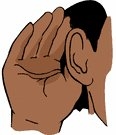
Worksheets and No Prep Teaching Resources
Reading Comprehension Worksheets
The Five Senses

The Five Senses
 Worksheets and No Prep Teaching Resources Reading Comprehension Worksheets The Five Senses |
 The Five Senses |
| edHelper's suggested reading level: | grades 6 to 8 | |
| Flesch-Kincaid grade level: | 6.71 |
|
Our Sense of Hearing
By Sharon Fabian |

|
 |
Create Weekly Reading Books
Prepare for an entire week at once! |
| Leave your feedback on Our Sense of Hearing (use this link if you found an error in the story) |
 |
The Five Senses
|